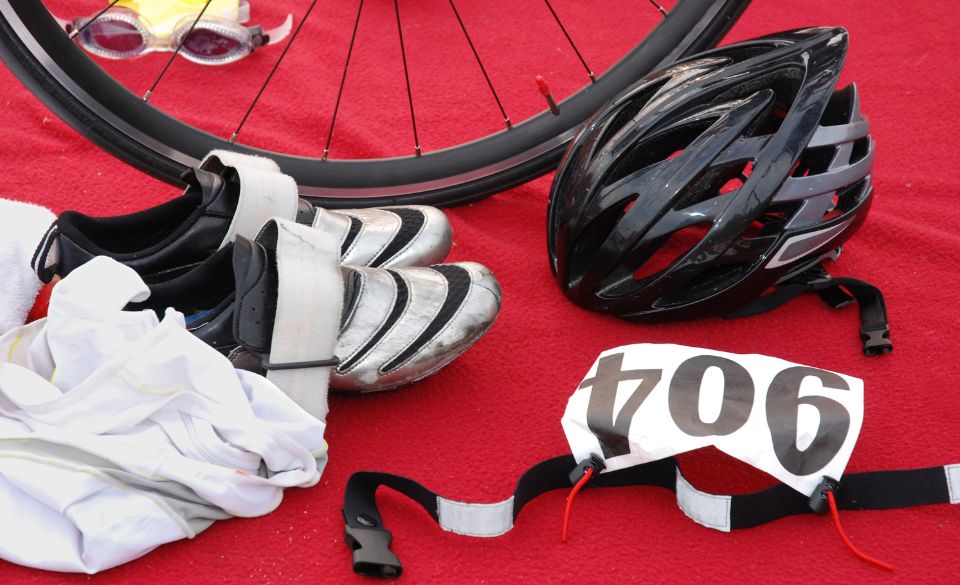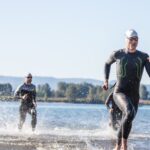
A Guide to Sub 12-Hour Ironman Splits
Page Contents
- Setting Realistic Goals and Training Plan
- Swim Leg: Efficient Technique and Endurance
- Bike Leg: Strength, Power, and Pacing
- Run Leg: Endurance, Mental Fortitude, and Pacing
- Additional Tips and Considerations
- Nutrition and Hydration
- Mental Preparation and Visualization
- Equipment and Gear
- Race-Day Execution
- Final Thoughts
The Ironman triathlon is a grueling test of endurance, consisting of a 2.4-mile (3.86 km) swim, a 112-mile (180.25 km) bike ride, and a full marathon 26.2-mile (42.20 km) run. Completing an Ironman in under 12 hours is a remarkable achievement that requires careful planning, dedicated training, and strategic pacing. In this blog post, we’ll provide you with a comprehensive guide to help you achieve your goal of a sub 12-hour Ironman, focusing on splits for each leg of the race.
Setting Realistic Goals and Training Plan
The first step to achieving a sub 12-hour Ironman is setting realistic goals and developing a well-rounded training plan. Assess your current fitness level, endurance capabilities, and time commitment available for training. Be honest with yourself and set achievable targets that align with your abilities and aspirations.
Design a structured training plan that includes regular swim, bike, and run sessions, along with strength training and recovery days. Gradually increase your training volume and intensity over time to build endurance and improve performance. Working with a qualified coach can provide valuable guidance and help you tailor your training plan to your specific needs.
Swim Leg: Efficient Technique and Endurance
The swim leg is the first part of the Ironman race, and it’s important to focus on developing an efficient technique and building endurance in the water. A study published in the Journal of Strength and Conditioning Research found that swimmers who had better stroke technique had faster swim times in long-distance events like the Ironman.
Incorporate interval training and drills into your swim sessions to improve stroke efficiency, body position, and breathing technique. Practice open water swims to simulate race conditions and get comfortable with sighting and navigating in open water. Building endurance through longer swim sessions and open water practice will also help you maintain a steady pace throughout the swim leg.
Bike Leg: Strength, Power, and Pacing
The bike leg of the Ironman is the longest portion and can significantly impact your overall time. To achieve a sub 12-hour finish, it’s important to focus on building strength, power, and maintaining a consistent pace on the bike.
Studies have shown that pacing strategy plays a crucial role in Ironman bike performance. A study published in the International Journal of Sports Physiology and Performance found that a conservative pacing strategy in the first half of the bike leg led to faster overall bike times in Ironman races.
Incorporate long rides to build endurance, along with shorter, high-intensity interval training to improve speed and power output. Focus on developing a strong cycling technique, optimizing your bike fit for comfort and efficiency, and practicing fueling strategies to sustain energy throughout the ride. Additionally, paying attention to pacing and conserving energy in the first half of the bike leg can set you up for a strong finish.
Run Leg: Endurance, Mental Fortitude, and Pacing
The marathon run at the end of the Ironman is a true test of endurance and mental fortitude. To achieve a sub 12-hour Ironman, it’s crucial to focus on building endurance, maintaining mental resilience, and pacing yourself effectively during the run.
Research has shown that successful pacing strategies in the marathon leg of an Ironman involve a conservative start, maintaining an even pace, and avoiding significant slowdowns towards the end. A study published in the Journal of Sports Science and Medicine found that runners who employed a more even pace distribution had faster overall marathon times in Ironman races.
Incorporate a mix of long runs, tempo runs, and interval training into your training plan to build endurance and improve running speed. Practice running off the bike during your training to get accustomed to the unique challenges of the run leg. Develop a fueling strategy that works for you to maintain energy levels throughout the marathon.
Additional Tips and Considerations
While the previous sections covered the key aspects of each leg and provided general guidance, here are some additional tips and considerations to help you in your pursuit of a sub 12-hour Ironman:
Nutrition and Hydration
Proper nutrition and hydration play a vital role in sustaining your energy levels throughout the race. Develop a nutrition plan that includes a balance of carbohydrates, proteins, and fats to fuel your body adequately. Practice your nutrition strategy during training to ensure it works well for you.
During the race, stay consistent with your fueling plan and hydrate regularly. Set reminders to take in fluids and consume nutrition at specified intervals to avoid depletion and maintain optimal performance.
Mental Preparation and Visualization
Ironman races are not only physically demanding but also mentally challenging. Use mental preparation techniques such as visualization and positive affirmations to strengthen your mindset. Visualize yourself crossing the finish line within the sub 12-hour time frame and overcoming any obstacles you may face along the way.
Break the race into smaller, manageable segments to stay focused and present in the moment. Set mini-goals for each leg or milestone to maintain motivation and a sense of progress.
Equipment and Gear
Ensure that your equipment and gear are in proper working condition and suitable for the race. Get your bike serviced, check tire pressure, and make any necessary adjustments to ensure a smooth and efficient ride. Invest in a comfortable and supportive pair of running shoes that provide adequate cushioning and support for the marathon leg.
Practice using your race equipment during training to become familiar with it and make any necessary adjustments or adaptations. This includes testing your race-day clothing, nutrition delivery systems, and hydration setup.
Race-Day Execution
On the day of the race, stick to your race plan but remain adaptable. Keep a steady pace, avoid going out too fast, and stay within your predetermined splits. Monitor your effort level, heart rate, and perceived exertion to ensure you’re staying on track.
Listen to your body and make adjustments if needed. If you encounter challenges or setbacks, stay calm and focused. Remind yourself of your training, mental preparation, and the reason why you embarked on this journey. Stay positive and keep pushing forward.
Final Thoughts
Aiming for a sub 12-hour Ironman is a significant undertaking that requires dedication, perseverance, and a well-thought-out plan. By focusing on efficient technique, building strength and endurance, pacing yourself wisely, and taking care of your nutrition and mental well-being, you’ll be well-equipped to achieve your goal.
Remember that every Ironman race is unique, and external factors such as weather conditions and course elevation can influence your performance. Stay flexible and adjust your strategy accordingly. Most importantly, enjoy the experience and celebrate the journey. Crossing the finish line of a sub 12-hour Ironman is an incredible achievement that represents the culmination of your hard work, determination, and passion for the sport. Good luck on your Ironman journey!



